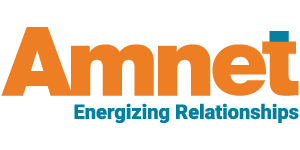[Approximate Reading Time : 4 mins]
The publishing industry is constantly evolving, but publishers are primarily focused on maintaining their standards. Content enrichment will take their responsibilities a step further and help them in creating metadata that ensures maximum utilization of their content.
What Is Content Enrichment?
Any content publication is mainly text with highlighted keywords and media. Content enrichment is adding content processing tools like natural language processing (NLP), machine learning, or artificial intelligence (AI) to the publication. These automatically create a fingerprint of the article that defines its topic of focus.
Why Should Publishers Use Content Enrichment?
It makes the content more usable and discoverable. This way, it connects people within a field and creates a network through linkable content. Semantic fingerprints can help in identifying authors in the field, creating a pool of potential reviewers. Authors can read collections of others’ relevant works and find collaborators for future research.
Users will have easy access to articles of a particular author, field, and topic without having to search meticulously. Unexplored topics will get better attention through strategic publishing. Advertisements can be targeted to users instead of articles by creating user profiles through semantic tagging.
Content enrichment indexes content efficiently, making it useful for computers in the digital transition of processes. It can enhance data-driven solutions, thus giving publishers a picture of the current trends in their respective niches.
Content enrichment is beneficial to all sectors of an organization: content production, editorial, IT, sales, marketing, and so on. Any investment in its implementation will reap its worth and more in the value it adds to the final processes and products of the organization.
How to Use Content Enrichment?
Content enrichment tools need to be incorporated as strategy. When done separately for every part of the business, much repetition of work occurs, and it cannot even be reused. Isolated projects with individual features for content enrichment do not work in the long run and will prove to be a waste of resources. Content enrichment works best when introduced strategically across all technologies, processes, and people.
Semantic tagging techniques are chosen according to the granularity of the content. Identify user consumption patterns, and match tags to the level that users find comfortable. Semantic indexing is used for high-precision requirements and automatic tagging for basic large bodies of content.
Publishers looking for innovations must look beyond familiar protocols and think about adding value to the processes and consumables. Invest in technology, and introduce features that will make a difference in an industry that follows a routine.
Amnet’s full-service publishing offers content enrichment services to add value, achieve strategic business goals, and increase user experience. We incorporate XML tagging and media, leverage statistical analysis to generate new fingerprints, and combine our technabled publishing expertise to help publishers attain their goals. Know more about our services, and get a free consultation here: https://amnet-systems.com/services/content-enrichment/.
Sources:
1. https://www.wiley.com/network/archive/using-content-enrichment-to-deliver-value.
2. https://blog.alpsp.org/2017/01/introducing-content-enrichment.html.
3. https://www.67bricks.com/wp-content/uploads/2019/07/67bContentEnrichmentWhitePaper.pdf.


